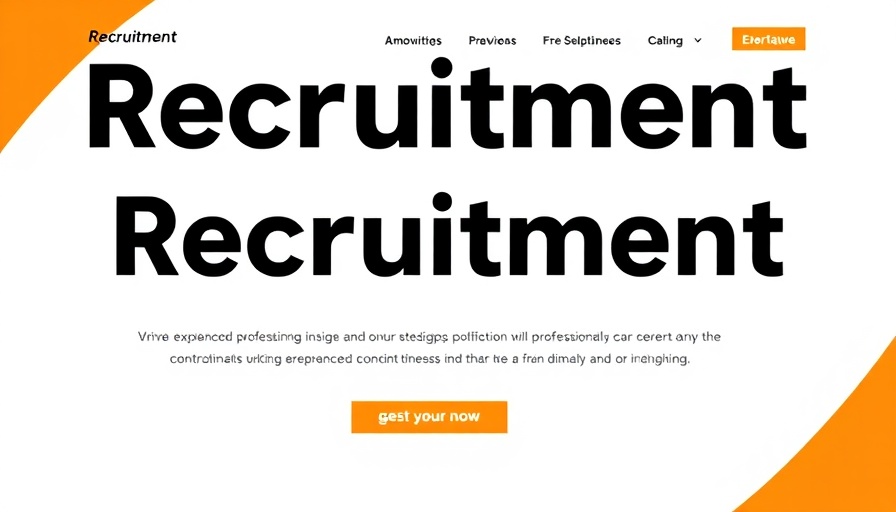
The Converging Paths of AI Governance
The world of artificial intelligence (AI) is more dynamic and complex than many appreciate, particularly in light of recent announcements about its governance. On January 13, 2025, three pivotal frameworks were proposed, setting the stage for AI's future: the Biden Administration's Interim Final Rule, OpenAI’s Economic Blueprint, and the UK’s AI-driven Plan for Change. Together, they sketch a landscape where technology, policy, and economy intersect, highlighting not just the potential of AI but also the growing need for robust frameworks to guide its development.
Understanding the U.S. AI Landscape
The Biden Administration's rule reflects a strong desire to maintain U.S. supremacy in the AI domain. As Commerce Secretary Gina Raimondo emphasized, ensuring that advanced AI technology remains rooted in American soil is deemed essential. This proactive approach aims to prevent technological offshoring and guarantee that America remains at the forefront of AI innovation. However, this protective stance has not gone uncriticized. Opposition from major players like Nvidia and Oracle suggests that while the intention may be to safeguard American interests, there’s a palpable concern about stifling innovation and competitiveness within the tech sector.
Global Reactions to U.S. Policies
The contrasting reactions from the tech industry highlight a fundamental tension: the balance between national security and global collaboration. Critics like the IT & Innovation Foundation argue that America's hardline stance might alienate potential partners, inadvertently bolstering China’s position in the global AI arena. The fear is that the overregulation of AI technologies could push international talent and investment away from the U.S., creating a divide rather than fostering the cooperative spirit needed to navigate global challenges.
OpenAI's Pioneering Economic Vision
As the debate over regulatory frameworks heats up, OpenAI’s Economic Blueprint asserts the need for foresight in shaping AI’s trajectory. It emphasizes the urgency of maximizing the benefits of AI while minimizing its potential harms. Key to its vision is the importance of investing in AI infrastructure, which it sees as an 'unmissable opportunity' not only for economic growth but also for community empowerment. By steering the $175 billion globally earmarked for AI projects towards U.S. initiatives, OpenAI aims to create a vibrant ecosystem where technological and human needs align.
Encouraging Responsible Innovation
Central to OpenAI's approach is the call for 'common-sense rules' that facilitate fair competition among developers. Such guidelines are intended to ensure that innovations serve broader societal needs and do not merely cater to monopolistic interests. This notion resonates strongly in discussions about AI governance, where the risk of monopolization versus equitable access is a key concern. The challenge remains in crafting regulations that promote innovation without stifling creativity or imposing undue burdens on emerging companies.
The Role of the UK’s AI-Driven Plan for Change
The UK has also entered the conversation with its AI-driven Plan for Change, suggesting a more collaborative international approach. By aligning its AI policy with global standards while fostering a competitive domestic market, the UK seeks to illustrate that responsible governance can coexist with economic progression. This dual focus on growth and regulation could serve as a model for other nations grappling with similar challenges, highlighting the importance of inclusive dialogue in the global AI community.
Future Trends in AI Governance
The emerging regulations and blueprints underscore a crucial lesson: as AI evolves, so too must our frameworks for governance. The successful integration of AI into society hinges on our ability to navigate the complex interplay of innovation, ethics, and international relations. Moving forward, lawmakers, developers, and users must engage in continuous discourse to adapt policies that not only respond to current realities but also anticipate future trends in technology.
Embracing the Complexity of AI
The discussions surrounding AI governance are not merely technical but deeply human. They reflect our collective aspirations and anxieties as a society faced with rapid technological advancements. Understanding AI’s possibilities while addressing its challenges requires a commitment to collaborative discourse among diverse stakeholders—governments, businesses, and civil society.
The Road Ahead: Navigating a New AI Era
As we stand on the cusp of an AI-driven era, both opportunities and risks abound. Striking a balance between innovation and regulation is a delicate task that requires ongoing vigilance and adaptability. The dialogue initiated by the recent policy frameworks is just the beginning. As stakeholders from different sectors contribute to shaping the contours of AI governance, we can strive to ensure that this transformative technology benefits all, fostering an equitable and prosperous future.
 Add Row
Add Row  Add
Add 



Write A Comment